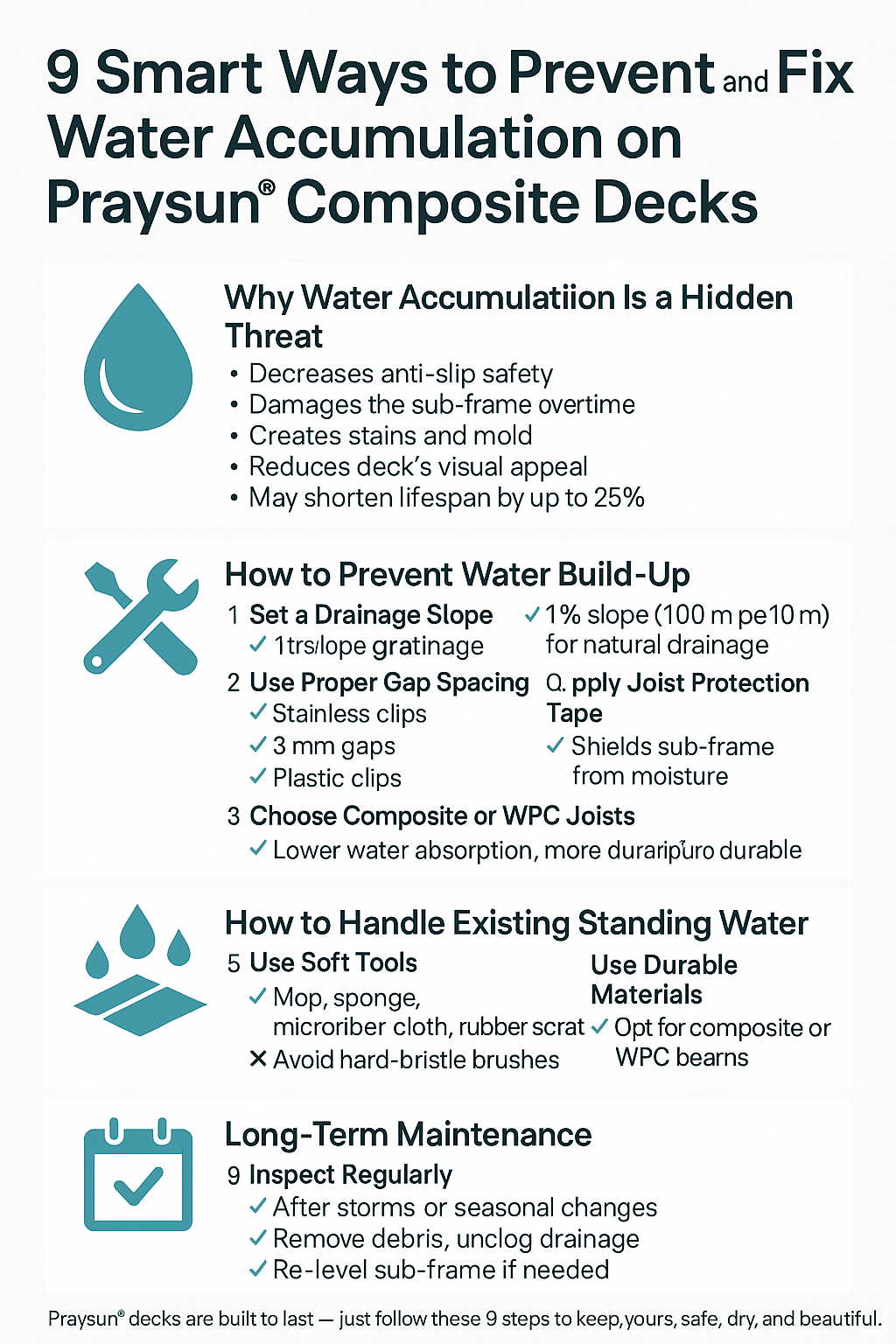Even the most durable outdoor decking, like Praysun® composite decks, isn't immune to one of nature’s most persistent problems—water accumulation. While Praysun® products are highly resistant to rot, warping, and mold, long-term standing water can compromise even the strongest deck’s lifespan, reduce its anti-slip performance, and dull its beauty. If you've invested in a sleek, safe, and low-maintenance outdoor space, it's essential to know how to prevent and deal with water accumulation effectively. This guide will walk you through actionable tips, professional installation insights, and expert cleaning techniques to keep your composite decking dry, safe, and visually appealing.
Many homeowners assume composite decking is immune to moisture-related damage. While Praysun® decks are far more water-resistant than wood, prolonged water buildup can:
Diminish the anti-slip performance, especially in shaded or grooved areas.
Leave behind unsightly water stains.
Gradually reduce the deck's durability and structural integrity.
Encourage algae or mildew growth on the surface.
Warp or rot the sub-frame beneath the boards over time.
Did you know? Studies show that improperly installed decks with poor drainage can lose up to 25% of their expected lifespan.

When installing your deck, plan for a gentle 1% slope—that’s just 100mm of drop over 10 meters. This slight tilt is barely visible to the eye but makes a world of difference in directing water off the surface.
Praysun®’s specially designed stainless steel or plastic fasteners ensure consistent spacing:
3mm gaps with stainless steel clips.
6mm gaps with plastic clips.
These intentional gaps promote efficient drainage while maintaining a clean, seamless appearance.
Don’t forget the support structure. Beam support tape repels water and prevents rot in wooden sub-frames by sealing moisture out—extending the life of your joists and beams.

For high-moisture areas or tropical climates, switch to plastic-wood or composite beams. These materials offer lower water absorption rates, better moisture resistance, and require less maintenance over time.
Skip the hard-bristled brooms that can scratch your deck's surface. Instead, use:
Soft-bristled brushes
Mops and buckets
Microfiber towels
Rubber scrapers
Sponges for residual moisture
Always clean along the grain (length) of the decking boards. Pay special attention to:
Grooves and channels where water pools.
Shadowed areas beneath furniture or planters.
Use your brush to guide water to less visible edges or drainage points. Finish with a sponge to soak up what’s left and prevent water stains or damage to the sub-frame.
If water seeps between decking boards and pools on joists, it can:
Weaken the sub-frame.
Cause warping, mold, or even structural failure.
Lead to costly repairs or deck replacement.
Seal with support tape during installation.
Replace wood with composite framing in high-risk or poorly ventilated areas.
Ensure proper ventilation below the deck to allow for drying and air circulation.
After heavy rain or storms:
Check for water pooling.
Clear out leaves and debris that block drainage.
Reapply tape or re-level sagging joists if necessary.
A quick check every few months could add years to your deck’s lifespan.
praysunmaterials@gmail.com